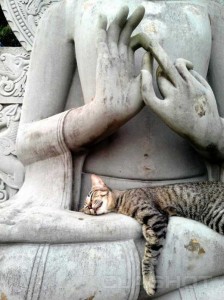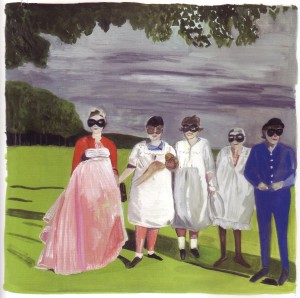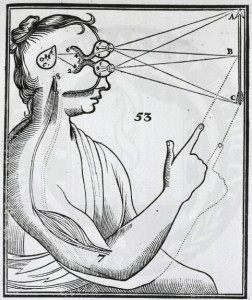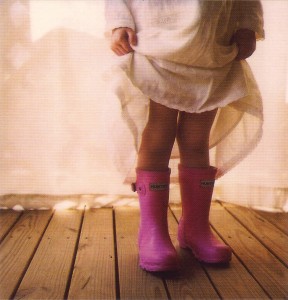What We Once Named Poison
 At the next Sunday Sangha, it will be my turn to bring in a reading for the group to discuss. I’m thinking about bringing the passage below, from After the Ecstasy, the Laundry, by Jack Kornfield:
At the next Sunday Sangha, it will be my turn to bring in a reading for the group to discuss. I’m thinking about bringing the passage below, from After the Ecstasy, the Laundry, by Jack Kornfield:
In Buddhist psychology, this maturing [of the spiritual path] is described through the image of a poisonous tree, which represents the suffering of the world. When we discover that a tree in our midst is poisonous, our first impulse is to try to cut it down–to remove it, so it no longer can be harmful. At this initial stage of practice our language is one of conflict: fear of poison and impurity, and the effort to root out and destroy that which is dangerous.
But as our compassion deepens, we recognize that the tree too is a part of the web of life. Instead of destroying it, we respect even this tree, though we also put a fence around it, warning others of the poison so they will not be harmed. Now our language changes to one of compassion and respect, rather than fear. Our difficulties, inner and outer, are now met with mercy. This is the second stage of practice.
Finally, as our wisdom deepens, we understand that our very problems and poisons are our best teachers. It is said that the wisest beings will come looking for the poisonous tree to use its fruit as medicine to transform the sufferings of the world. The energies of passion and desire, anger and confusion become transformed into the ardor, strength, and clarity that bring awakening. We understand that it is through facing the very sufferings of the world that the deepest freedom and compassion arise. What we one named poison is now recognized as an ally in our practice.
A View is Just a View
 I’ve started reading Coming Back to Life, by Joanna Macy, which is part of the homework assignment for our first CDL retreat coming up in April. I know Macy is considered to be a great dharma teacher, specializing in Engaged Buddhism especially as it relates to Climate Change and what she calls Deep Ecology. But her tone — in my opinion — is so strident and political that…even though I basically agree with what she’s saying…I can hardly stand to read it.
I’ve started reading Coming Back to Life, by Joanna Macy, which is part of the homework assignment for our first CDL retreat coming up in April. I know Macy is considered to be a great dharma teacher, specializing in Engaged Buddhism especially as it relates to Climate Change and what she calls Deep Ecology. But her tone — in my opinion — is so strident and political that…even though I basically agree with what she’s saying…I can hardly stand to read it.
Example: In the short time span since the US Supreme Court put George W. Bush in the White House, the changes have been swift, deep and dramatic, giving free rein to economic forces that despoil the Earth and impoverish her people. Now with greater need than ever for public monitoring and outcry, we have become a truth-deprived and fearful populace.
(She’s right about George Bush and the Supreme Court, but really, does that belong in a dharma book!)
Anyway, I was getting more and more irritated (suffering!) with these and other outrageous statements such as:There is a mountain of evidence regarding the 9-11 attacks that was excluded from the 9-11 Commission’s report. It remains unaddressed by the US government, mainstream media and most of US institutions.
Jeeze.
But then, thankfully, I remembered this quote from the Buddha:
After investigation, there is nothing among all the views that such one as I would embrace. Seeing misery in philosophical views without adopting any of them and searching for truth, I discover inner peace. For one who is free from views there are no ties. For one who is delivered by understanding, there are no follies. But those who grasp after views and philosophical options wander about in the world annoying people.
That the Supreme Court should not have “put George W. Bush in the White House” is a view. (One with which I agree, but what good does it do to make an issue of it now?) That there is some mysterious “mountain of evidence regarding the 9-11 attacks” that is being kept from the American people is another view. Which sound like crazy paranoia to me, and which again — in my opinion — has no place in a dharma book.
But of course, this is also a view.
Whether she is “right” or “wrong” to put these things in her book is not the point.
I can have a view — I can agree or disagree or take issue with her views all I want — but I don’t have to get all riled up about it. It’s one thing to have a view about things and quite another to grasp onto that view…and to make myself (and others) miserable in the process.
May I continue to remind myself of this!
Pay Attention, Don’t Cling, Be Kind
 The Buddha famously said, “I teach one thing and one thing only: Suffering and the end of suffering.” Which sounds like 2 things, but still.
The Buddha famously said, “I teach one thing and one thing only: Suffering and the end of suffering.” Which sounds like 2 things, but still.
In a recent talk given at the month-long retreat currently being held at Spirit Rock (where participants listen to a dharma talk every single night), Sally Armstrong opened the evening’s session — somewhat apologetically — by saying that really, every dharma talk any of the teachers ever give are all really just variations on the same 3 instructions:
(1) Pay Attention
(2) Don’t Cling
(3) Be Kind
Having listened to thousands of dharma talks over many years….I’d have to agree. But oh how hard it is, just to do those 3 simple things!
Which is why it’s good to keep listening to the talks.
So here are some excellent ones to get you started, all given during this month’s retreat at Spirit Rock:
Finding True Happiness, by Greg Scharf
Extraordinary Seeing: Simplicity, Honesty and Mindfulness, by Carol Wilson
Mindfulness Includes Everything: Including Star Showers, by Sally Armstrong
Easy as 1-2-3!
Kitty-Satva
 We did a lot of Compassion practice at the Dharmagiri retreat, which included sending blessings to all beings (especially the wild animals in the area–including the snakes, of which there were many!) and reciting the name of Kuan Yin Bodhisatva (who is the personification of that which listens–and responds–to the cries of the world). We also took part in a Great Compassion Renewal Ceremony in which we did quite a lot of bowing and declared our intention to aspire to a lot of lovely things including, “I will cross all living beings over the sea of suffering.” Which I took to mean that I will cultivate an attitude of compassion for everyone and everything.
We did a lot of Compassion practice at the Dharmagiri retreat, which included sending blessings to all beings (especially the wild animals in the area–including the snakes, of which there were many!) and reciting the name of Kuan Yin Bodhisatva (who is the personification of that which listens–and responds–to the cries of the world). We also took part in a Great Compassion Renewal Ceremony in which we did quite a lot of bowing and declared our intention to aspire to a lot of lovely things including, “I will cross all living beings over the sea of suffering.” Which I took to mean that I will cultivate an attitude of compassion for everyone and everything.
Which I am working on.
So with that as my intention…I have adopted 2 cats from our local shelter. Stella and Izzy. They are both about a year old and have lived their whole life at the shelter. Until now!
I’d post photos, but they’re adjusting right now by hiding under the bed and behind the bookcase. (Izzy looks kind of like the cat shown here but with white legs and belly, and Stella is mostly white with black and tan spots.)
Stay tuned. I expect them to be ready for the camera in a could of days.
Birthday Gifts
I am grateful for this precious human birth.
For a mind that’s open to the Buddha’s teachings and a heart that’s inclined to practice.
For my parents, teachers, benefactors, and all the many causes and conditions that have brought this moment into existence.
For the mystery of incarnation.
And for this very breath.
(photo by Mathias Meyer, from Polaroid Notes, published by Chronicle Books)
What If?
 Last night I listened to an excellent talk by Gloria Taraniya, given at the Forest Refuge this past week, in which she offers reflections on not getting caught up in how we SHOULD be, but instead, turning to how we actually ARE.
Last night I listened to an excellent talk by Gloria Taraniya, given at the Forest Refuge this past week, in which she offers reflections on not getting caught up in how we SHOULD be, but instead, turning to how we actually ARE.
She said that as she was struggling with this process, these four questions spontaneous arose in her mind:
1. What if there isn’t any right way to be?
2. What if the way you are is just fine?
3. What if all the self-improvement just compounds the suffering?
4. What if the only problem here is that you think there’s a problem here?
Yeah!
***
(illustration from “My Favorite Things,” by Maira Kalman; click on image to enlarge)
Look Again
 I’m still practicing the “Now I See” exercise I wrote about previously (here and here and here) in which I go to the St. Louis Art Museum, choose a piece of art that “catches my eye,” then look at it awhile and write a page about it in my journal beginning with the phrase: “Now I see…,” then go back a week or more later, look at it some more and write about it again, and then go back and look-and-write until I’ve done it 13 times.
I’m still practicing the “Now I See” exercise I wrote about previously (here and here and here) in which I go to the St. Louis Art Museum, choose a piece of art that “catches my eye,” then look at it awhile and write a page about it in my journal beginning with the phrase: “Now I see…,” then go back a week or more later, look at it some more and write about it again, and then go back and look-and-write until I’ve done it 13 times.
It’s an amazing and enlightening exercise.
There’s nothing magic about doing it 13 times. It just needs to be done a few more times that you think you’ll be able to look at the same frickin’ thing and still be able to write about it!
Also, it’s inspired by this poem by Wallace Stevens, which I don’t exactly understand, but I keep returning to again and again:
Thirteen Ways of Looking at a Blackbird
I
Among twenty snowy mountains,
The only moving thing
Was the eye of the blackbird.
II
I was of three minds,
Like a tree
In which there are three blackbirds.
III
The blackbird whirled in the autumn winds.
It was a small part of the pantomime.
IV
A man and a woman
Are one.
A man and a woman and a blackbird
Are one.
V
I do not know which to prefer,
The beauty of inflections
or the beauty of innuendoes,
The blackbird whistling
Or just after.
VI
Icicles filled the long window
With barbaric glass.
The shadow of the blackbird
Crossed it, to and fro.
The mood traced in the shadow
An indecipherable cause.
VII
O thin men of Haddam,
Why do you imagine golden birds?
Do you not see how the blackbird
Walks around the feet
Of the women about you?
VIII
I know noble accents
And lucid, inescapable rhythms;
But I know, too,
That the blackbird is involved
In what I know.
IX
When the blackbird flew out of sight,
It marked the edge
Of one of many circles.
X
At the sight of blackbirds
Flying in a green light,
Even the bawds of euphony
Would cry out sharply.
XI
He road over Connecticut
In a glass couch.
Once, a fear pierced him,
In that he mistook
The shadow of his equipage
For blackbirds.
XII
The river is moving.
The blackbirds must be flying.
XIII
It was evening all afternoon.
It was snowing
And it was going to snow.
The blackbird sat
In the cedar-limbs.
To Know is To Be Grateful
 I just received the year-end newsletter from Dharmagiri (which is the Hermitage in South Africa that I’ll be going to in January). It included this photo of the Sacred Mountain (which is the translation of Dharmagiri) along with this message from Kitisarro and Thanissara, who will be leading the retreat:
I just received the year-end newsletter from Dharmagiri (which is the Hermitage in South Africa that I’ll be going to in January). It included this photo of the Sacred Mountain (which is the translation of Dharmagiri) along with this message from Kitisarro and Thanissara, who will be leading the retreat:
“It’s interesting that the the word for gratitude in Pali, katannuta, actually translates as knowing what has been done. Gratitude is less a perfunctory “thanks very much” but more a capacity to appreciate the learning from the whole spectrum of life experiences; even difficulties are something we can be grateful for — usually in retrospect!
“How is that? At some point, once we move out of our reactivity and quiet ourselves into a deeper wisdom, we attune to a knowing that accepts the perfection of our life — just as it is. From there, we are able to feel the blessing of it all.”
Don’t Be Fooled
 “Within itself, the mind is already peaceful. That the mind is not peaceful these days is because it follows moods. It becomes agitated because moods deceive it. The untrained mind is stupid. Sense impressions come and trick it into unhappiness, suffering, gladness and sorrow, but the mind’s true nature is none of these things.
“Within itself, the mind is already peaceful. That the mind is not peaceful these days is because it follows moods. It becomes agitated because moods deceive it. The untrained mind is stupid. Sense impressions come and trick it into unhappiness, suffering, gladness and sorrow, but the mind’s true nature is none of these things.
“Gladness and sadness is not the mind, but only a mood coming to deceive us. The untrained mind gets lost and follows these things. It forgets itself, then we think that it is we who are upset or at ease or whatever. But really this mind of ours is already unmoving and peaceful, really peaceful.
“So we must train the mind to know these sense impressions and not get lost in them. Just this is the aim of all this difficult practice we put ourselves through.”
— Ajahn Chaa, A Taste of Freedom, Buddhist Publication Society Wheel Publications
***
(illustration by Maira Kalman: Food is a Costly Antidepressant — from Food Rules: An Eater’s Manual)
What Do I Really Need?
 Today’s post from the Kindness Handbook, by Sharon Salzberg:
Today’s post from the Kindness Handbook, by Sharon Salzberg:
“What do I really need right now, in this moment, to be happy? The world offers us many answers to that question: You need a new car and a new house and a new relationship and… But do we really?
“What do I lack right now? Does anything need to change in order for me to be happy? What do I really need?
“….As I go through all kinds of feelings and experiences in my journey through life–delight, surprise, chagrin, dismay–I hold this question as a guiding light: ‘What do I really need right now to be happy?’
“What I come to over and over again is that only qualities as vast and deep as love, connection, and kindness will really make me happy in any sort of enduring way.”
***
(photo by Jenifer Altman, from For the Love of Light, published by Chronicle Books

